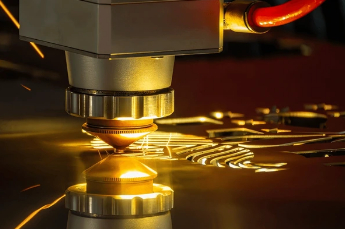Ensuring Stability in High-Speed Laser Cutting: From Cutting Strategy to Collision Prevention

Ensuring Stability in High-Speed Laser Cutting: From Cutting Strategy to Collision Prevention
High-speed laser cutting offers unparalleled precision and efficiency in metal fabrication. However, achieving optimal performance requires a strategic approach that encompasses cutting strategies and advanced collision prevention techniques.
Strategic Planning: Optimising Cutting Paths
Effective cutting strategies are foundational to maintaining stability during high-speed operations:
-
Contour Analysis: Prior to cutting, evaluate the geometry of the material to identify potential challenges such as narrow bridges or intricate internal contours that may compromise stability.
-
Sequencing: Plan the cutting sequence to minimize the movement of the laser head over already cut areas, reducing the risk of collisions with fallen or shifted parts.
-
Lead-In and Lead-Out Paths: Design these paths to avoid intersecting with critical areas, ensuring smooth transitions and reducing mechanical stress.
-
Utilizing Simulation Software: Employ advanced CAM software to simulate the cutting process, allowing for the identification and rectification of potential issues before actual cutting begins.
Advanced Collision Prevention Technologies
Modern laser cutting systems incorporate sophisticated technologies to prevent collisions:
-
Intelligent Collision Avoidance (ICA): Developed by Lantek, ICA detects unstable contours and assigns micro-cuts at their ends. This proactive approach ensures that parts are securely fastened before the laser head passes over them, significantly reducing the risk of collisions .
-
Active Anti-Collision Systems: Bodor's laser machines are equipped with active anti-collision functions that utilize high-speed Z-axis adjustments to avoid obstacles. This system can detect potential collisions and respond dynamically, enhancing safety and efficiency .
-
Laser Distance Sensors: Wenglor's Time-of-Flight sensors measure distances up to 10 meters, providing real-time data to prevent collisions in automated systems like gantry loaders .
-
Machine Vision and AI Integration: Implementing machine vision systems equipped with AI allows for real-time monitoring and adjustment of the cutting process, identifying and correcting deviations that could lead to collisions .
Maintenance and Calibration
Regular maintenance and calibration are crucial to ensure the longevity and stability of laser cutting systems:
-
Routine Inspections: Conduct regular checks on the laser head, focusing on components such as lenses and mirrors, to ensure optimal performance.
-
Calibration: Periodically calibrate the laser system to maintain cutting accuracy and prevent misalignments that could lead to collisions.
-
Software Updates: Keep the cutting software up to date to leverage the latest advancements in collision prevention algorithms and features.
Benefits of Implementing Advanced Strategies
Adopting comprehensive cutting strategies and advanced collision prevention technologies offers several advantages:
-
Increased Productivity: Minimizing downtime due to collisions leads to more consistent and efficient operations.
-
Cost Savings: Reducing the frequency of repairs and part replacements lowers operational costs.
-
Enhanced Safety: Proactive collision avoidance measures protect both equipment and personnel.
-
Improved Quality: Stable cutting processes result in higher-quality finished products with fewer defects.
By integrating thoughtful cutting strategies with cutting-edge collision prevention technologies, manufacturers can achieve stable and efficient high-speed laser cutting operations.
